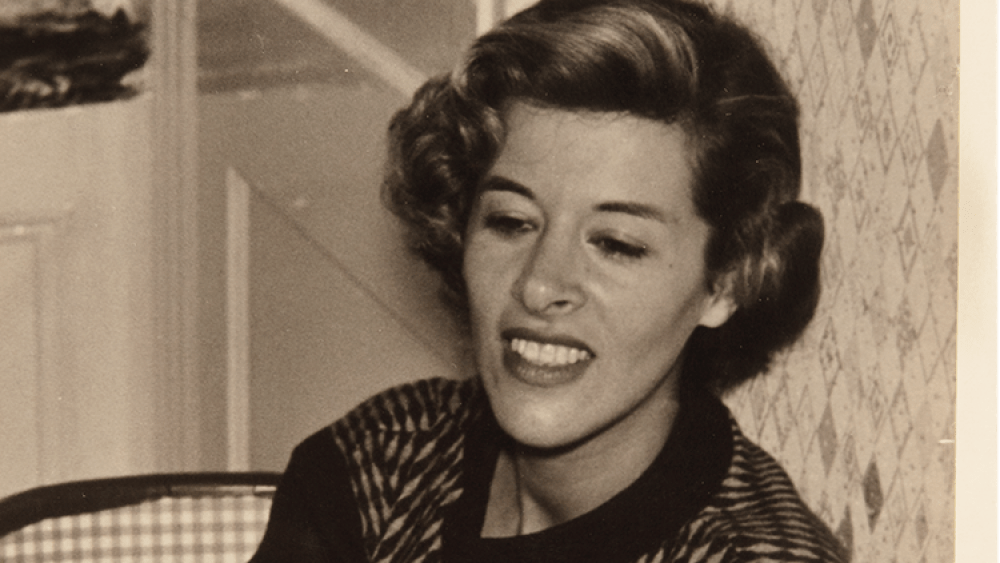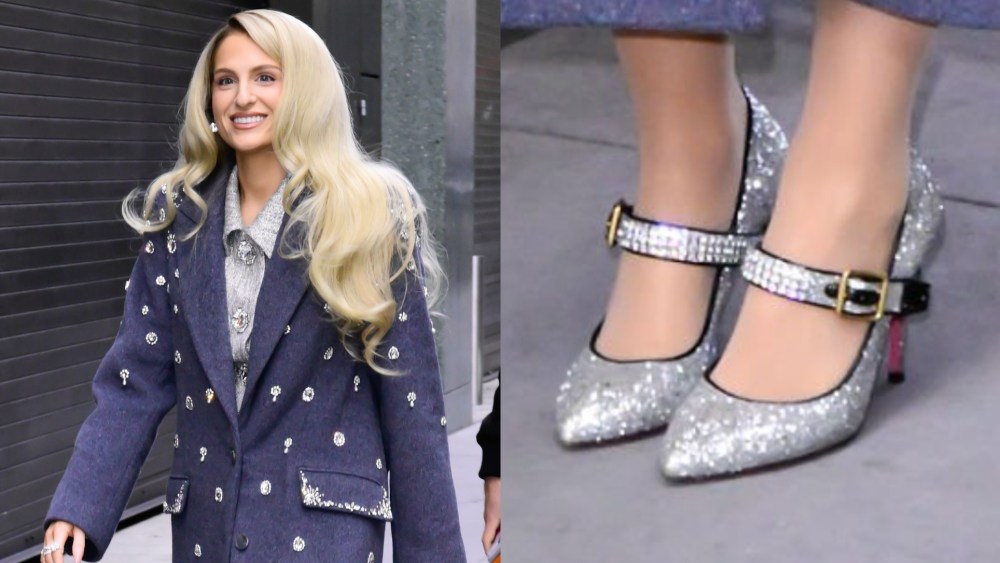Lillian Hirshleifer, who along with her late husband Paul, brought designer shopping to Long Island, died Tuesday in her Roslyn, N.Y., apartment.
Hirshleifer, 97, died from complications that were brought on by kidney disease, according to her daughter Caryn Hirshleifer, who runs Hirshleifer’s with her sisters Lori Hirshleifer Sills and Shelley Shapiro.
Fastidious and a woman of great taste, as well as action, Lillian Hirshleifer was a guiding force in what is now a 110-year-old specialty store with an abundance of designer brands that is based in Manhasset, N.Y. Whether walking, talking or doing some decision making, Hirshleifer did everything fast. “When she said, ‘Can you do this? There was an implied ‘now,’” Caryn Hirshleifer said. “She was just like, ‘Get it done.’ She was a real perfectionist, suggesting if you have this, and add this, it will be even better. She was always able to take things to that next level.”
Born in Brooklyn, she grew up on St. Mark’s Place there and met her future husband Paul Hirshleifer, who also lived in the neighborhood. The pair were childhood sweethearts before they wed in the late 1940s. Much of Lillian Hirshleifer’s professional life is rooted in her husband’s family.
After her father-in-law Herman died unexpectedly in his 60s, her husband, who had started his career at Bloomingdale’s, stepped in to lead the family’s company. Hirshleifer’s dates back to 1905 when the founder Jacob Hirshleifer opened the first store on Manhattan Avenue in Brooklyn, and the retailer later moved into Queens in the 1950s. Initially, furs were the focus, primarily ones that were more affordable than those sold in Manhattan. In the early years, his brother Morris also pitched in at the store, which offered shoppers the option of payment plans. Jacob Hirshleifer’s son Herman later joined him there. Morris Hirshleifer went on to open a jewelry store nearby.
Before the rise of Seventh Avenue designers like Claire McCardell and Ben Zuckerman in New York City, ready-to-wear — suits, cloth coats, and dresses — was not yet a category with many women making their clothes at home or relying on seamstresses and tailors to make their attire. Others relied on the European fashion houses. In turn, Hirshleifer’s stopped selling fur and tapped into more wearable styles from emerging American designers.
After his father died, Paul Hirshleifer joined the family business, working alongside his mother Rose. After closing the Brooklyn store, the retailer debuted in the Forest Hills section of Queens, and remained there until 1990. Hirshleifer unveiled its first store in the Americana Manhasset, when the shopping center was only four years old. Paul Hirshleifer first discovered it while taking a shortcut to avoid traffic en route to the store in Queens. “One day he stopped, went in and met Frank Castagna, who was an incredibly philanthropic visionary. My father said to him, ‘Hey, you don’t know what you’re sitting on here.’ So the two of them pretty much decided that they were going to create this high-end center,” Caryn Hirshleifer said.
As one of The Americana’s original tenants on the North Shore of Long Island, Lillian and Paul Hirshleifer ran Hirshleifer’s as a team and maximized her striking fashion sense. While Paul Hirshleifer commuted from the family’s home in Roslyn to oversee the store in Queens, Lilian Hirshleifer was in charge of the one in Manhasset. Her innate style and presence often made people’s heads turn, whenever she entered a room, Caryn Hirshleifer said. Partial to Chanel, Yves Saint Laurent and Ungaro, Lillian Hirshleifer helped put the retailer on the map with designers. When Chanel offered to let Hirshleifer’s only sell its fragrance, Lillian Hirshleifer said she would only do so, if she could sell its ready-to-wear too. That sparked what is now a decades-long personal relationship with Hirshleifer’s, according to Caryn Hirshleifer.
“She planted the seeds for what we now have by selecting designer brands. She really knew what she wanted. So much of what my parents did has laid the groundwork for where we are today,” Caryn Hirshleifer said.
The retailer now has more than 130 labels and includes four of the fifth-generation family members among its team. The Row, Gabriela Hearst and Loewe are some of the more au courant brands that are sold in the store along with stalwarts like Brunello Cucinelli. The Manhasset store has nearly 20,000 square feet of selling space with offices and receiving department below. The footprint of the original 1,200-square-foot store is part of at the current space.
Hinting at her mother’s of-the-moment style, Hirshleifer said, “She would love Sacai right now for being very fashion-forward and creative. She would accessorize to the hilt. I used to be able to take her emotional temperature by her accessories. If she would say, ‘I’m depressed today,’ I would say to her, ‘Listen. There’s no way you are depressed by the way that you are accessorized with your scarves, and your earrings.’ She was just always impeccable dressed. Her sense of style was not just with her clothing but with so many other things.”

A view of Hirshleifer’s.
Thomas Iannaccone
In 1985, Hirshleifer’s invested $400,000 and hired architect Peter Marino to transform a 3,500-square-foot old shoe store into a sleek new Hirshleifer’s in Manhasset. With a limestone and aluminum facade, the store’s interior featured gray goatskin-textured walls, Serge Chermayeff-designed English Art Deco furniture circa 1934, black lacquer and glass cases, black frame screens and a hand-painted pink and pale blue ceiling accented with gold. The setting dovetailed with the couple’s buy for the store at that point in time — with Chanel, Valentino, Missoni, and Karl Lagerfeld being some of the labels in the mix. “We shop at no price point,” Paul Hirshleifer once told WWD.
Before experiential became part of retailers’ m.o., Hirshleifer’s built that location with the flexibility to host fashion shows with parallel track lighting running the length of the store. In August of 1985, the retailer welcomed 80 of its moneyed customers for a Valentino runway fashion show that was inspired by the house’s couture show in Rome that same year. With on-site seamstresses and finishers, Hirshleifer’s also played up customer service, offering a delivery service, lunch, dinner or anything else that the customer desired.

Lori Hirshleifer Sills, Brunello Cucinelli, Caryn Hirshleifer and Shelley Shapiro.
Melissa Butler
Lillian Hirshleifer and her husband traveled to Europe for buying trips season after season. For train rides from Paris to Italy, they would pack a huge feast to enjoy along the way. After her husband’s death in 2004, Lillian Hirshleifer continued to work in the store for a period of time, offering advice to shoppers, which sometimes was unsolicited. “But it was difficult for my mother to be there, because my father’s presence had been so large. She just didn’t want to be there without him,” according to Caryn Hirshleifer, a vice president and counsel.
Working as a collaboration, the three sisters have overlapping responsibilities, whereas their father ran the business as the main point person. After his passing, they converted his office into a conference room.
She continued, “It’s complicated. My sisters and I were thrust into running this business. [It was as though] the plane was flying and the pilot just passed out,” Caryn Hirshleifer said. “There was a period of time, when we asked, ‘How are we going to do this? Are we going to do this?’ And we have. Thank God.”
The company now employs more than 135 people compared to 25 at that time.
Lillian Hirshleifer was still influencing fashion in other ways in recent years. When the lifestyle brand Brunch collaborated with Hirshleifer’s in 2023, an old photo of a smiling Lillian Hirshleifer wearing a knitted top inspired the introduction of knit top slippers.
Her interest in design could be seen in her collection of mercury glass and perfume bottles, and her love of art including whirligigs and Americana. Hirshleifer occasionally piled her daughters into the family’s station wagon with a friend and their children to visit historic locales like Mystic, Conn., Sturbridge Village, Mass., and Williamsburg, Va. Never indecisive about anything, “she felt that you either liked something, or you didn’t. It was either nice or not nice. She just had an incredible presence. She had a tough outer core sometimes, but inside of that she really had a heart of gold,” her daughter said.
In keeping with Lillian Hirshleifer’s wishes, services will not be held. “She was not a service kind of person. She was like, ‘Let’s get it done. Cremate me. I don’t want people sitting around,’” Caryn Hirshleifer said.
Hirshleifer is survived by her daughters and five grandchildren. At the family’s request, donations can be made in her memory to the Northwell Foundation.



